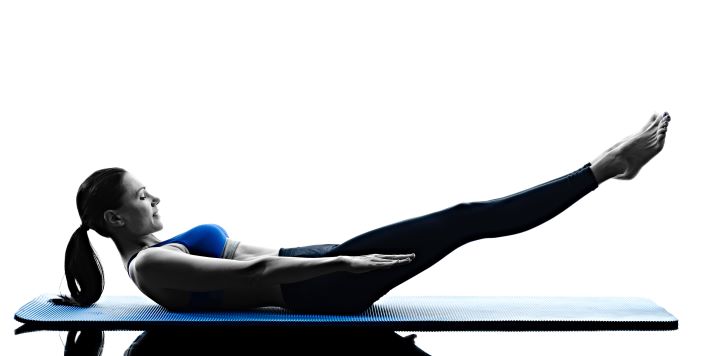Are you looking for the right type of exercise to help your aching back? There are many kinds of exercise that are helpful for people with ongoing back pain. However, there is no one universal form of exercise that is best for everyone. Pilates is one form of exercise that is very beneficial for many people with persistent back pain. Pilates is a type of mind-body exercise that strengthens your core while also improving posture and flexibility. This low-impact approach may be a good option for you if your back pain has been aggravated by other forms of exercise.
Pilates Basics
Pilates is based on 6 principles: centering, concentration, control, precision, fluidity, and diaphragmatic breathing. Each exercise is performed with isometric contractions of the transversus abdominis, perineal, gluteal, and multifidus muscles during diaphragmatic breathing. This is known as the “Powerhouse”. Pilates exercise is adapted to your abilities. Exercises are gradually increased in difficulty as you become more comfortable and confident. Pilates is now being prescribed for many people with back pain who have failed other forms of exercise.
Pilates for Back Pain: A Proven Approach
A 2014 study published in the Physical Therapy Journal looked at the effects of the Pilates Method in people with low back pain for more than 3 months. Half the participants performed mat-based Pilates and the other half performed equipment-based Pilates using the reformer. Sessions were lead by a physical therapist who was also a certified Pilates instructor. After 6 weeks, all participants reported less pain, improved disability, and less fear of movement. Participants performing the equipment-based exercise reported slightly less disability than those performing mat-based exercise. In conclusion, both types of Pilates exercise can help people with back pain.
Your “Powerhouse”
Pilates begins with activating your “powerhouse” or core. This is the foundational exercise for the Pilates Method. To practice, begin on your back with your hips and knees bent. Place your hands on your abdomen. Concentrate on each breath. Breathing occurs slowly through the rising and lowering of your abdomen. Next, gently pull your belly button in and down towards your pelvis. This activates your transverse abdominis and pelvic floor muscles. Be sure to maintain diaphragmatic breathing as you activate your “powerhouse”.
Modified One Hundreds
Lay on your back with your knees bent and arms to your side. First, activate your “powerhouse”. Next, raise your arms from the mat. Slowly raise your head and then your shoulders slightly off the mat. Hold this position and perform 5 arm movements for each breath in and each breath out. Then, lower yourself back down to the starting position. Perform 4 to 10 controlled repetitions. Each repetition includes 10 arm movements up and down (5 on the breath in and 5 on the breath out). The goal is to perform 10 repetitions for a total of 100 arm movements.
One Leg Circle
Lay on your back with one knee bent and the other straight. First, activate your “powerhouse”. Next, raise your straight leg up until you feel a stretch in the back of your thigh. Slowly perform 5 clockwise circles with your leg. Then perform 5 counterclockwise circles. Lower your leg back down to the starting position. Repeat another repetition on the opposite side. Perform 4 to 10 controlled repetitions.
One Leg Kick
Lay on your stomach. First, activate your “powerhouse”. Then prop yourself up onto your elbows. Next, bend one knee until you feel a stretch in the front of your thigh. You can perform 1 or 2 controlled kicks with each leg. Alternate legs while you maintain activation of your “powerhouse”. Perform 4 to 10 controlled repetitions on each side.
Side Kick
Lay on one side your both legs straight. Begin with your feet slightly in front of your body. Activate your “powerhouse”. Raise your top leg slightly. With your knee straight and toes pointed up, raise your leg in front of you. You can perform 1 or 2 controlled kicks in this position. Next, move your leg behind you as your point your toes down. Perform 4 to 10 controlled repetitions on each side.
How to Get Started with Pilates
If you have been struggling with back pain for a while, Pilates may be right for you. As with any new exercise program it is best to have your physical therapist examine you before starting. You can also visit a local certified Pilates instructor at Pyour Core or Black Sheep Studios. This way you can avoid any unnecessary increase in pain.
If you would like help from your physical therapist, call to schedule an appointment. We want to help you move pain-free.


